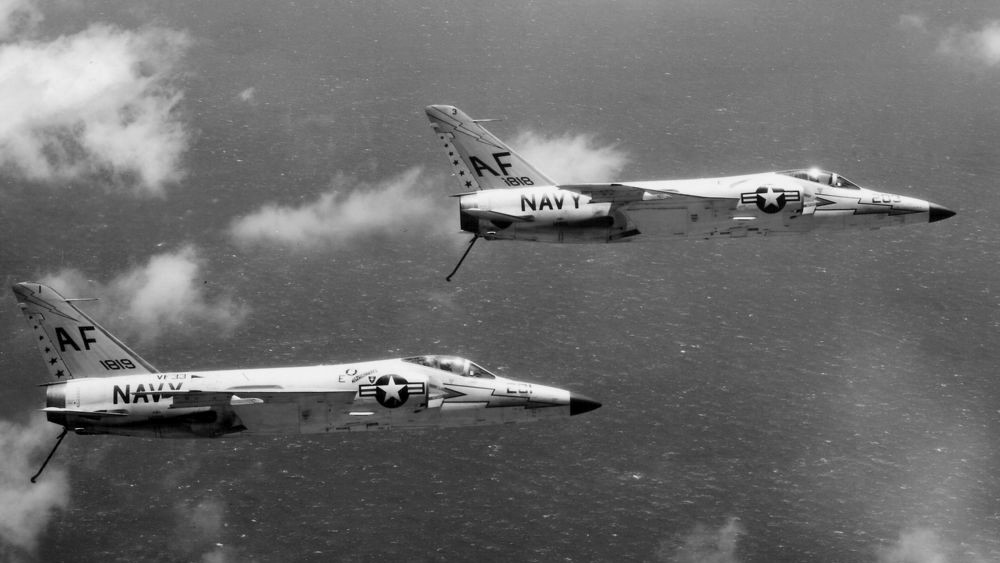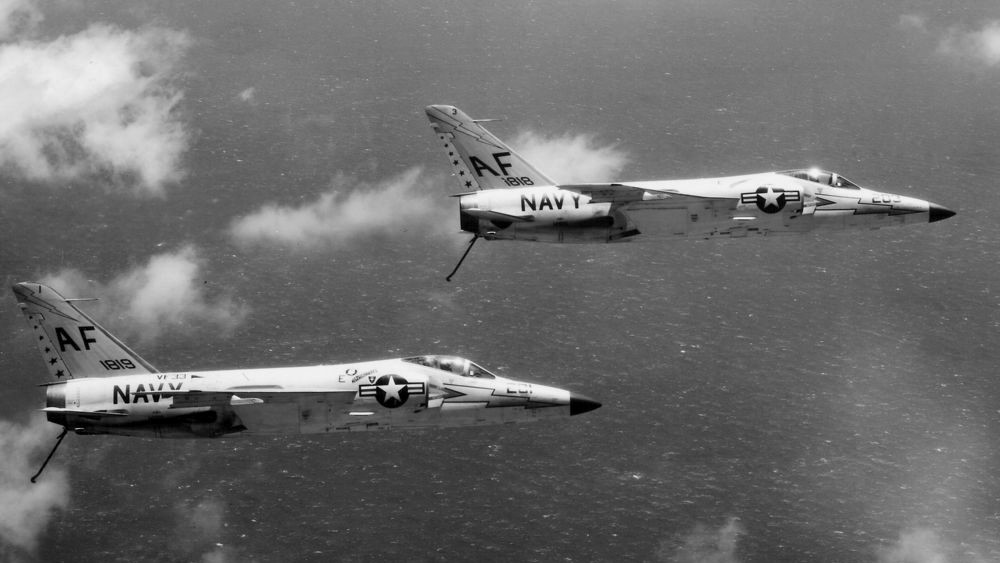

A fighter pilot’s plane suddenly taking a hit is a terrifying situation. It becomes more startling when the plane isn’t even in a combat situation. It becomes outright bizarre when the gunfire is coming from the plane the pilot is in. 68 years ago this weekend that happened to one unfortunate U.S. Navy aviator. Thomas Attridge Jr had the distinction of being inside the first jet fighter to shoot itself down.
But first, some history. The F-11F Tiger, made by Grumman, was the U.S. Navy’s first supersonic jet fighter put into service. It was meant to be faster than the F9F 6/7 Cougar, capable of going past Mach 1 and featuring a lighter design with swept wings. The wings could be folded back, making them easier to store on the Navy’s aircraft carriers. The aircraft manufacturer worked closely with the military, putting it through several tests. Along with missiles, the Tiger was outfitted with four 20mm cannons. And that’s where things went wrong for Attridge in 1956.
On Sept. 21, 1956, Navy test pilot Attridge took off from Grumman’s airfield on Long Island, New York in an F-11F Tiger, tail number 138620. His mission was simple: carry out a weapons test over the water and then land back at the airfield. He flew to an altitude of 20,000 feet. Once there, Attridge turned the Tiger to 20 degrees, reached Mach 1 and at approximately 13,000 feet fired off a short burst from his four cannons. He dived at a steeper incline, hit the afterburner, and at 7,000 feet fired one more cannon burst, emptying the plane of ammo.
Almost immediately after that second burst the Tiger rattled from impact. The windshield of the canopy and the right engine were hit. At that moment, Attridge thought he’d hit a bird. This was roughly 20 miles off the Atlantic coast, not an enemy fighter in sight. The situation was immediately bad: the engines were losing power. He turned back to land, slowing down to 230 miles per hour, but it wasn’t enough. The plane was making a tearing sound like “a Hoover vacuum cleaner picking up gravel from a rug,” according to Attridge. He was forced to eject as the plane lost a wing and hit the ground a mile shy of the runway, traveling a few hundred feet. It was a total loss. Attridge was lucky for the most part; he broke vertebrae and a leg, but survived (and would fly again only months later).
Subscribe to Task & Purpose Today. Get the latest military news and culture in your inbox daily.
Only later did Attridge learn what happened. The wreckage of the Tiger had bullet holes in the nose, canopy and engine. He had shot himself. The first burst of cannon fire traveled faster than the fighter jet had been going at the time, but the bullets, like any object flying through the air, were subject to drag. When Attridge engaged the afterburner and changed his angle of descent he ended up going so fast and at just the right angle that he caught up to and flew into the very rounds he’d fired off only seconds earlier. One round was even found lodged inside the plane, helping investigators confirm the Tiger shot itself down.
This was a new development in aerial combat. The biplanes of World War I and fighters of World War II didn’t go so fast that such a feat was a risk, albeit an unlikely risk. New, supersonic fighter jets now meant that fighter pilots could move faster than the very munitions they were launching.
Luckily for the Navy and aviators in general, Attridge’s experience was unique. The F-11 Tiger would stay in service until 1969, but the Navy moved onto other planes. There was one more U.S. military instance of a fighter jet being hit by its own munition. In 1973, test pilots Pete Purvis and Bill Sherman were flying a F-14 Tomcat in the Pacific Missile Test range. Purvis fired an AIM-7 missile, but instead of it shooting off as usual, there was an issue with the missile. It tumbled from the jet, blowing up and hitting the F-14 with shrapnel. “That’s weird!” Purvis thought, according to his own recollections of the incident. Soon alarms were going off and Purvis and Sherman had to eject. They were unharmed, but the F-14 went down and exploded.
The latest on Task & Purpose
- Four Marines trained an Air Force base to take the Marine Corps fitness test. The Air Force gave them medals for it.
- Sailor proudly rocks ‘E-4 Mafia’ patch as he stands watch on USS Abraham Lincoln
- The A-10 era is over for this legendary Air Force attack squadron
- A comprehensive guide to the shoulder tabs Army soldiers wear on their uniforms
- 101st Airborne Division troops headed to Middle East, 3rd Infantry will go to Europe
